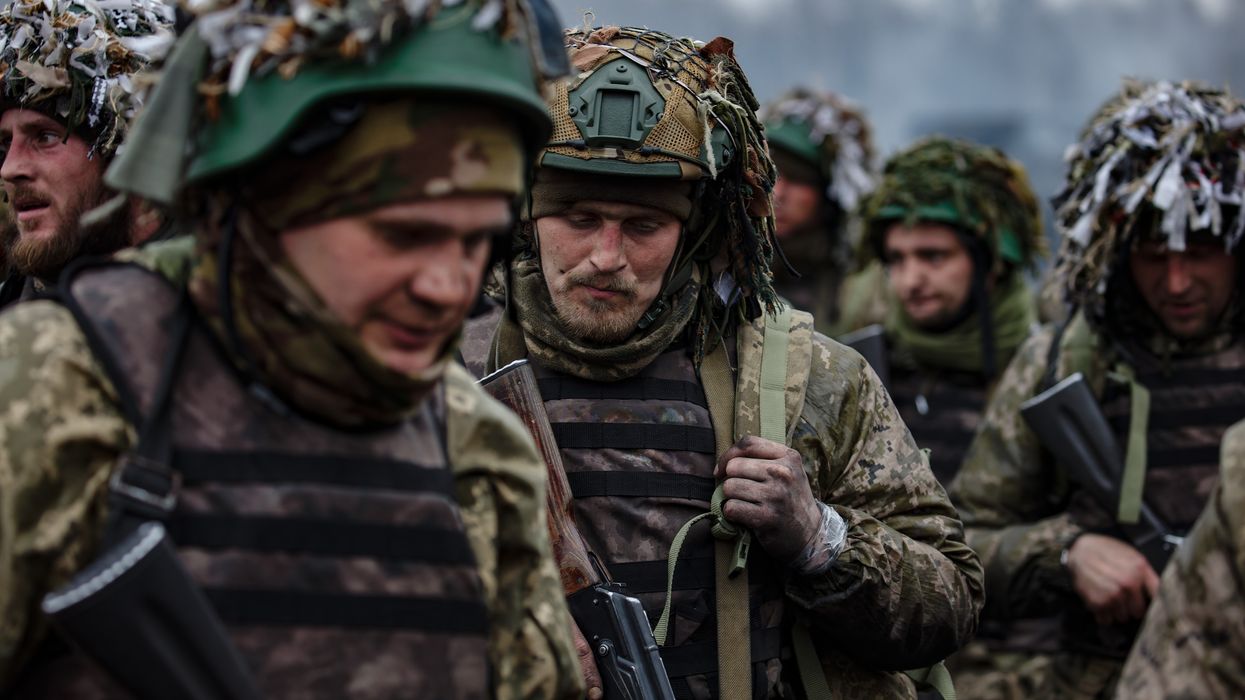The Bunker appears originally at the Project on Government Oversight and is republished here with permission.
A triple-bank shot of trouble
The Pentagon loves the number three: think of the nation’s nuclear triad (bombers, subs, and missiles) or the three major military services (Army, Navy, and Air Force). In recent days, each of those services has experienced troubles that shouldn’t have happened. While the specifics vary, the problems are all rooted in the perpetual bane of the Defense Department’s existence: poorly planned programs; too-rosy glasses; poor training and execution. Accountability will largely be MIA when it comes to assessing responsibility. Bureaucracies are far better at removing fingerprints from snafus than dusting for them.
The M10 tank goes belly up
Too bad there’s no Ozempic for U.S. Army tanks. The service blew up its M10 Booker “light” tank program May 1 after it discovered that the nearly 40-ton (!) beast would crack eight of the 11 bridges at Fort Campbell, Ky. Sure, such armor may not sound light, but it is — when compared to its bulked-up M-1 tank cousin, which tips the scales at 73 tons. The Army has long had difficulty developing Goldilocks armored vehicles — light enough to fly to the front, but beefy enough to protect the troops inside once they get there.
The Army awarded a $1.14 billion contract to General Dynamics in 2022 to build the first 96 M10s. It wanted to buy 504 (the service prefers to call such multi-ton tracked machines outfitted with 105 mm guns “armored infantry support vehicles,” but we taxpayers aren’t bound by such Pentagon nomenclatural niceties).
The M10 is “one of the Army’s top modernization priorities,” the service declared in February. Three months later, not so much. “This is not a story of acquisition gone awry,” Alex Miller, the service’s top technology officer, told Defense One. “This is a story of the requirements process creating so much inertia that the Army couldn't get out of its own way, and it just kept rolling and rolling and rolling.”
Refreshingly, Defense Secretary Pete Hegseth and Army Secretary Dan Driscoll put the M10 out of its misery after GD had delivered 80 of them. “We got a heavy tank,” Driscoll conceded. “We went to the Pentagon leadership and we said, ‘we made a mistake, this didn’t turn out right. We’re going to stop.’”
It's a good start.
One reason why the new ICBM is so costly
The Pentagon has a nearly Pavlovian predilection to assume the best and buy the worst. It’s like that old adage: It’s easier to ask for forgiveness (after the screwup) than ask for permission (when the mission is Permission: Impossible). Take the Air Force effort to replace the aging nuclear-tipped Minuteman III intercontinental ballistic missiles with new Sentinel ICBMs. The Sentinel program’s current price tag of $141 billion — an incredible 81% hike since 2020 — is so high the Pentagon said last year that it is now planning to come up with a “simpler” and “more affordable” plan sometime “around 2026.”
One way the Air Force wanted to save money was to put Sentinel missiles polka-dotted across five states into the existing 400 underground silos now housing the Minuteman IIIs. “Part of the requirements, initially — 10 years ago when this program was started — was to reuse the holes, the missile holes at the launch facilities,” Air Force General Thomas A. Bussiere said April 30. “That was believed to be more efficient, more cost effective, and quicker.” Despite decades of use, and well aware that the Air Force wanted to re-use its ICBM silos, the service recently clutched its warheads and was stunned (wink-wink) to discover they’re too decrepit for the new ICBMs. As Air Force Missileer Emily Litella might have said: “Never mind.”
“As the program continues to undergo restructuring activities, the Air Force analysis continues to confirm unacceptable risks to cost, schedule, and weapon system performance stemming from the original baseline strategy of converting Minuteman III silos,” the service said May 6. “To mitigate this and other risks, the Air Force plans to build new missile silos on predominantly Air Force-owned real estate, which means reusing the existing missile sites but not the 55-year-old silos.”
The Sentinel’s continuing problems have the Air Force considering upgrades so the Minuteman fleet can remain on duty until 2050, 11 years longer than currently planned. Other experts maintain the Pentagon’s nuclear triad can safely be turned into an atomic dyad by amputating its ICBM leg.
It turns out the Sentinel’s problems aren’t so much with the missile itself, but the rotting silos and other ground-based elements of the system, that are driving costs sky high.
Apparently, Air Force dirt ain’t dirt cheap.
Warplanes are designed to dive … but not like this
It’s been a tough tour for the USS Harry S. Truman, the 100,000-ton aircraft carrier whose F-18s have been bombing Houthi rebels in Yemen from the Red Sea. First, one of its F-18s was shot down by mistake by another U.S. warship in December. On April 28, a second F-18 fell off the flattop while it was being towed, after the carrier swerved, apparently to avoid a Houthi drone. A third F-18 ended up in the drink May 6 following a botched landing. Thankfully, there were no serious injuries, except to Navy pride.
The mishaps “have raised questions about the strain placed on the aircraft carrier’s crew,” the Washington Post’s Dan Lamothe reported. Defense Secretary Hegseth has twice extended the Truman’s stay in the region to ensure there are two U.S. carriers in the ‘hood to deal with the Houthis.
THE BOTTOM LINE
There is plenty of blame to go around for all of these snafus. But don’t go looking for finger-pointing. That tends only to happen when those allegedly culpable are no longer around to defend themselves. On May 7, a fourth military service, the U.S. Marine Corps, blamed a 2024 CH-53 helicopter crash that killed five on “fatal controlled flight into terrain.”
Purported pilot error, in other words.
Here’s what has caught The Bunker’s eye recently
The House passed a bill codifying President Trump’s recent decision to change the name of the Gulf of Mexico to the Gulf of America, the Washington Examiner reported May 8.
Defense Secretary Hegseth is wielding a scalpel when it comes to his ballyhooed Pentagon spending cuts when he should be brandishing an ax, Greg Williams of the Center for Defense Information, here at the Project On Government Oversight, wrote May 7 for Just Security.
→ Read no evil (PDF)
The Pentagon ordered its commanders May 9 to purge their libraries of all books promoting racial and gender diversity. Up next: an order barring all books about how the U.S. military lost its 20-year war in Afghanistan?
Thanks for losing yourself in The Bunker this week. Forward this on to colleagues so they can subscribe here.
















